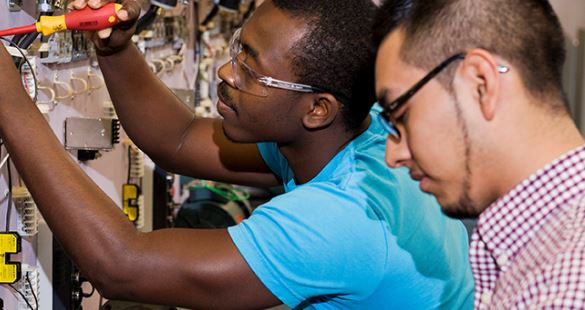Contributing Column by:
Joel Welch, Greenville Tech
Developing a highly skilled, entry-level workforce is critical for driving economic development and keeping companies competitive in today’s environment. Nationwide, communities and companies are tackling this challenge. In many cases, efforts to satisfy industry needs are undertaken independently. Companies will expand hiring and develop new screening techniques, and community organizations will develop programs to support the unemployed and under-employed. Even with the efforts of colleges, industries, and community organizations, there is growing evidence of a gap between the skills available in the labor force and the jobs available. This is a serious challenge that requires that companies, community organizations, and colleges come together to develop solutions.
It will take strong partnerships to address the disparity between the available skills in the labor force and current job needs. Career Skills Now is an example of such a partnership. Funded by the Greenville Region Workforce Collaborative, the initiative works with employers to determine needs and with unemployed and underemployed workers to offer free training, placement, and coaching services that allow them to acquire an initial job with a pathway for progression in advanced manufacturing.
Successful companies are utilizing a multi-pronged approach to locate, recruit, and retain their workforce, starting with active engagement in career programs in the middle and high schools and continuing through the technical college programs. Representatives from area employers work with technical colleges, often as members of advisory committees, to clearly define required skills for entry-level jobs and to see that those skills are incorporated into credit and non-credit programs. Those programs can range from certificates such as fork lift operator to associate degree programs such as mechatronics. Companies are active in efforts to recruit potential students to the programs and invest in their education through scholarships and internships. For example, BMW, Michelin, and GE have created programs that allow students to work while in college, gaining hands-on experience by applying classroom learning with a chance to be hired upon graduation if they meet expectations. Students who benefit from industry relationships such as these while in college have higher retention rates, and the company gains more skillful, productive, and long-term employees.
A best practice in hiring is to recognize credentials applicable to manufacturing. These include the WorkKeys Career Readiness Certificate; certifications from the Manufacturing Skills Standards Council, NIMS and AWS; and college certificates, diplomas and degrees. Having gained a certification is a good indication that the prospective employee has the capacity not only for the entry-level position, but also for those further along the career pathway.
Companies are meeting their workforce needs by partnering with their local government job placement offices to identify potential candidates for programs that relate to their industry. Community organizations are an important component of developing a strong manufacturing workforce. Partnering with those organizations, companies are developing “grow-your-own” programs. An excellent example of a “grow your own” initiative is the apprenticeship program. These programs can be academic or purely technical with options that allow students to take college credit or non-credit classes while receiving on-the-job training. This topic will be explored in greater depth in a future column.
There is not a one-size-fits-all workforce development program. Industries must be engaged in the entire process from recruiting to hiring to career path so that programs meet their needs. The partnerships within the community do not end when the entry-level employee is hired. Industries should be involved in program advisory boards and commit technical advisors to work with faculty on curriculum development and revision. Greenville Technical College has partnered with companies and community organizations to successfully meet workforce needs through programs tailored to meet the needs of each industry. The key to success is a strong partnership between the industry, college and community to identify skills, recruit potential employees, provide appropriate training, and support their employees’ personal growth. Working together, we will meet the workforce needs of our communities.
About the Author:
Dr. Joel Welch worked as a consulting engineer for 9-1/2 years before joining the faculty at Greenville Technical College (GTC) in 1998. At GTC, Joel has served as a faculty member, department head, dean for Engineering Technology, associate vice president for administration, and currently as dean of the Business and Technology division. During his career, he has built strong partnerships with business and industry as well as other educators to meet workforce needs. Joel earned a bachelor’s degree in Civil Engineering from The Citadel, a master’s degree in Civil Engineering from the University of South Carolina, and a Ph.D. in Educational Leadership from Clemson University. Active in the community, he has served on the Greer Middle College High School Board and the SC Skills USA Board. He is a current member and past-president of the Pleasantburg Rotary Club, and he directs a youth drama team. He and his wife, Lisa, have lived in the Greer area for the past 22 years and are the parents of 3 children.





Be the first to comment on "Best Practices for Developing an Entry-Level Workforce"